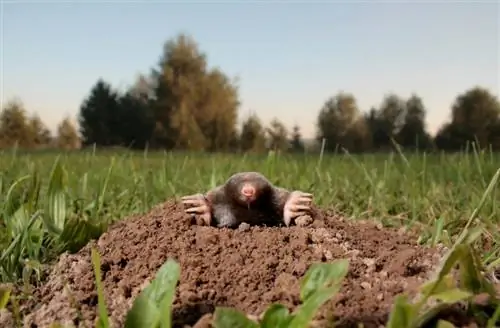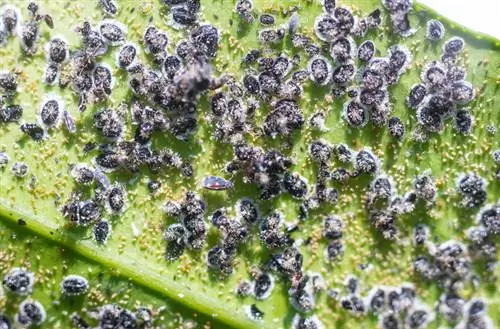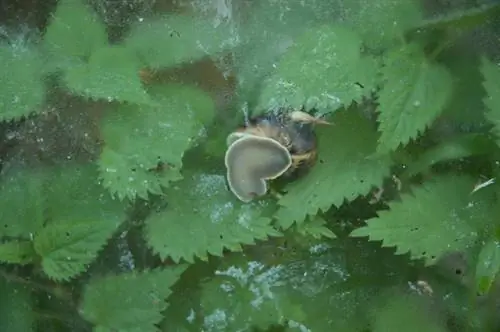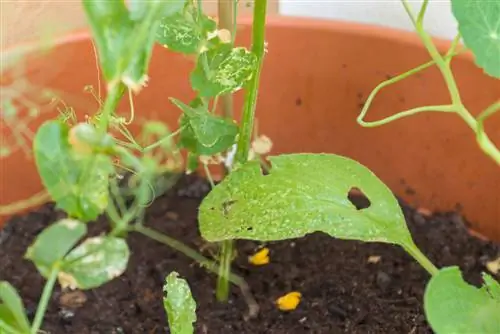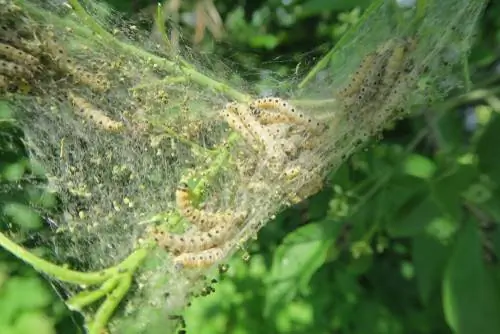- Author admin [email protected].
- Public 2023-12-16 16:46.
- Last modified 2025-01-23 11:20.
Some pests can be very damaging to the lawn. Only effective control can help here so that the ornamental lawn retains its dense green surface. How you can recognize the pests and what you can do about them.

How can lawn pests be effectively controlled?
Lawn pests such as ants, moles, grubs and craneflies can cause damage to the lawn. To combat them, you should identify the pests, reduce their presence and, if necessary, use non-toxic measures such as nematode spraying to control their infestation.
Common lawn pests
- Ants
- moles
- Garden beetle grubs
- May and June beetle grubs
- Meadow snails
Ants
Ant infestation can be recognized by the nests, which appear as small sand mounds in the lawn. Dig out the nests with a spade and move them to a place where they won't disturb you.
moles
Molehills on the lawn are very annoying, especially if they spread over an entire area. Moles are protected. So you must not remove them under any circumstances. Therefore, try to drive away the earth diggers who are sensitive to noise and smell. Have a kid's party on the lawn with lots of feet walking on it. Some garden owners swear by sour milk, which they pour into the mole's burrows.
Garden leaf beetle
They are one of the biggest pests of lawns. Their grubs eat the roots of the grass and can destroy entire lawns in severe infestations. At the latest when there are an unusually large number of birds pecking for food on the lawn, you should pay attention and look for the whitish grubs that are one to five centimeters long. Sometimes a thorough treatment with the scarifier helps. However, you will then have to reseed parts of the lawn. A non-toxic solution is the application of nematodes.
Other grubs
Other grubs are not as common. If the infestation is severe, the only option is often to replant the lawn after the grubs have been thoroughly removed. Nematodes can also be used here.
Nematodes as non-toxic pest control
A non-toxic way to control grubs in the lawn is with nematodes. These are certain nematodes that are spread on the infected soil and eat the grubs from the inside. It is important to only use the nematode species that attack the pest species present in the lawn. Get advice from your specialist gardening store.
Tips & Tricks
Prevention is hardly possible against most pests. Strengthen the grasses so that pest infestations do not bother them much. Regular fertilizer applications, scarifying and correct watering ensure a robust lawn.

